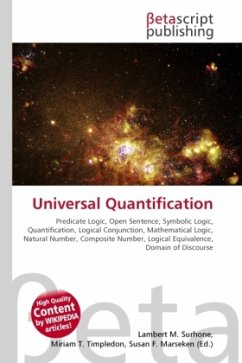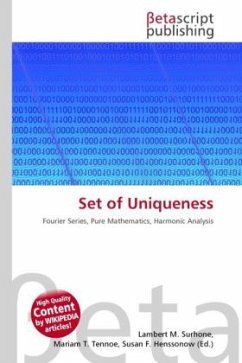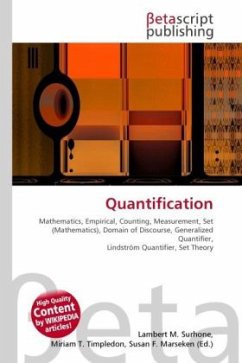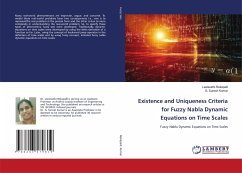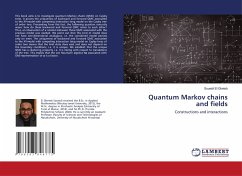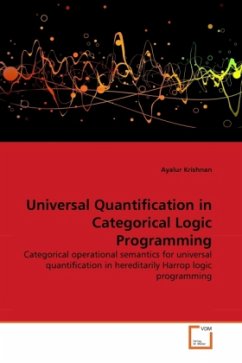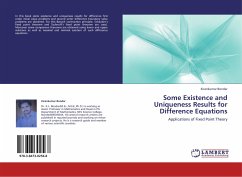
Uniqueness Quantification
Versandkostenfrei!
Versandfertig in 6-10 Tagen
23,99 €
inkl. MwSt.

PAYBACK Punkte
12 °P sammeln!
High Quality Content by WIKIPEDIA articles! In mathematics and logic, the phrase "there is one and only one" is used to indicate that exactly one object with a certain property exists. In mathematical logic, this sort of quantification is known as uniqueness quantification or unique existential quantification. Uniqueness quantification is often denoted with the symbols " !" or =1". For example, the formal statement exists! n in mathbb{N},(n - 2 = 4) may be read aloud as "there is exactly one natural number n such that n - 2 = 4". Uniqueness quantification can be expressed in terms of the exist...
High Quality Content by WIKIPEDIA articles! In mathematics and logic, the phrase "there is one and only one" is used to indicate that exactly one object with a certain property exists. In mathematical logic, this sort of quantification is known as uniqueness quantification or unique existential quantification. Uniqueness quantification is often denoted with the symbols " !" or =1". For example, the formal statement exists! n in mathbb{N},(n - 2 = 4) may be read aloud as "there is exactly one natural number n such that n - 2 = 4". Uniqueness quantification can be expressed in terms of the existential and universal quantifiers of predicate logic by defining the formula !x P(x) to mean exists x,(P(x) wedge forall y,(P(y) to x = y)). An equivalent definition that has the virtue of separating the notions of existence and uniqueness into two clauses, at the expense of brevity, is exists x,P(x) wedge forall y, forall z,((P(y) And P(z)) to y = z). Another equivalent definition with the advantage of brevity is exists x,forall y,(x = y leftrightarrow P(y)).



